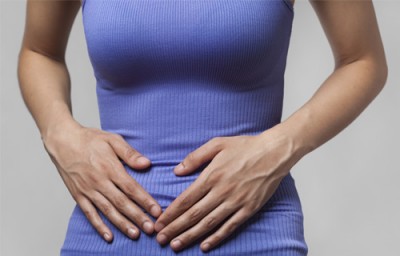 Pelvic pain in women refers to pain in the lowest part of your abdomen and pelvis. If asked to locate your pain, you might sweep your hand over that entire area rather than point to a single spot. Chronic pelvic pain is pain in your pelvic region the area below your bellybutton and between your hips that lasts six months or longer. Regrettably, the cause of it remains unclear.
Pelvic pain in women refers to pain in the lowest part of your abdomen and pelvis. If asked to locate your pain, you might sweep your hand over that entire area rather than point to a single spot. Chronic pelvic pain is pain in your pelvic region the area below your bellybutton and between your hips that lasts six months or longer. Regrettably, the cause of it remains unclear.
- Chronic pelvic pain has many different characteristics. Signs and symptoms may include:
Severe and steady pain
Pain that comes and goes (intermittent)
Dull aching
Sharp pains or cramping
Pressure or heaviness deep within your pelvis - In addition, you may experience:
Pain during intercourse
Pain while having a bowel movement or urinating
Pain when you sit for long periods of time
Your discomfort may intensify after standing for long periods and may be relieved when you lie down. The pain may be mild and annoying, or it may be so severe that you miss work, can’t sleep and can’t exercise.
At present there is no standardized treatment available for this syndrome. Medication management has brought more side effects then relief.
If you suffer from chronic pain you have a right to have your pain properly assessed and treated.
The use of Kegel exercises
Kegel exercises is commonplace and widely utilized by physical therapists and Pilates instructors. When employed correctly these exercises can strengthen the core, the lower back, and the pelvic organs. Problems occur when these muscles are overactive and are inhibiting associated core and lower back muscles. Asking overactive pelvic floor muscles to perform Kegel exercises can lead to pelvic floor pain and irritation of the pudendal nerve. The question is then how do we determine if the pelvic floor muscles are overactive or underactive?
How Neuromuscular therapy helps: symptoms leave the pelvic area in a sensitized condition resulting in a loop of muscle tension and heightened neurological feedback (neural pain wind-up). Current protocols largely focus on stretches to release over tensed muscles in the pelvic (commonly referred to as trigger points) and progressive relaxation therapy to reduce causative stress. Treatment is focused at restoring functional movement and eliminating patterns of imbalance resulting from trauma or from habitually stressful patterns of use.
NMT can be a supportive therapy to manage your symptoms by:
- treating connective tissue dysfunction,
- treating myofascial trigger points,
- mobilizing viscera (gentle manual therapy techniques aimed at releasing adhesions and restoring the proper mobility of the internal organs, such as the uterus, bladder, colon and small intestine),
- correcting postural and movement dysfunction (often when we are in pain not only does it change our muscle tone but it causes us to move and posture ourselves differently than we typically would. For instance, we slouch or place unequal weight on one lower extremity),
Manual muscle testing is also applied. For example, if the pelvic floor muscles are weak, other associated muscles will have to compensate and thus become tight and painful.
Some causes of chronic pelvic pain include:
Endometriosis. This is a condition in which tissue from the lining of your womb (uterus) grows outside your uterus. These deposits of tissue respond to your menstrual cycle, just as your uterine lining does — thickening, breaking down and bleeding each month as your hormone levels rise and fall. Because it’s happening outside your uterus, the blood and tissue can’t exit your body through your vagina. Instead, they remain in your abdomen, where they may lead to painful cysts and fibrous bands of scar tissue (adhesions).
This can set up an unhealthy environment within the pelvic floor because the decrease in pelvic and abdominal organ/muscle/fascia mobility can lead to decreased circulation, tight muscles, myofascial trigger points, connective tissue dysfunction and pain.
Tension in your pelvic floor muscles. Spasms or tension of the pelvic floor muscles can lead to recurring pelvic pain.
Chronic pelvic inflammatory disease. This can occur if a long-term infection, often sexually transmitted, causes scarring that involves your pelvic organs.
Ovarian remnant. During a complete hysterectomy — surgical removal of the uterus, ovaries and fallopian tubes — a small piece of ovary may accidentally be left inside and later develop painful cysts.
Fibroids. These noncancerous uterine growths may cause pressure or a feeling of heaviness in your lower abdomen. They rarely cause sharp pain unless they become deprived of a blood supply and begin to die (degenerate).
Irritable bowel syndrome. Symptoms associated with irritable bowel syndrome — bloating, constipation or diarrhea — can be a source of uncomfortable pelvic pain and pressure.
Painful bladder syndrome (interstitial cystitis). This condition is associated with chronic inflammation of your bladder and a frequent need to urinate. You may experience pelvic pain as your bladder fills, which may improve temporarily after you empty your bladder.
Psychological factors. Depression, chronic stress or a history of sexual or physical abuse may increase your risk of chronic pelvic pain. Emotional distress makes pain worse, and living with chronic pain contributes to emotional distress. These two factors often get locked into a vicious cycle.
Pelvic congestion syndrome. Some doctors believe enlarged, varicose-type veins around your uterus and ovaries may result in pelvic pain. However, other doctors are much less certain that pelvic congestion syndrome is a cause of pelvic pain because most women with enlarged veins in the pelvis have no associated pain.
How will birth have affected my pelvic floor?
Just being pregnant can weaken your pelvic floor, even if you don’t go on to have a vaginal birth. During labour and birth, your pelvic floor stretches to allow your baby’s head to pass out of your womb, and through your vagina. This may have left you with bruising, swelling and soreness.
The nerves that connect to your pelvic floor muscles will have also stretched. This can make the area between your vagina and anus (perineum) feel numb or sore, which can make it more difficult for you to work your pelvic floor muscles.
Your pelvic floor may have been overstretched during labour if you:
- pushed your baby out for a long time
- had a big baby
- had a severe tear
- had a forceps birth
If you try to do too much too soon after your baby’s birth, your pelvic floor may feel heavy, or as if you have something bulging between your legs. This is a sign that you need to slow down, so try to get some rest, and don’t stay on your feet for too long. If you can, spend time lying down, rather than sitting. This will help to take some of the pressure off your perineum.
learn how an effective treatment plan applying integrative proven techniques is the smart choice for fast pain relief and long lasting results, schedule now.
[schedule_now]
